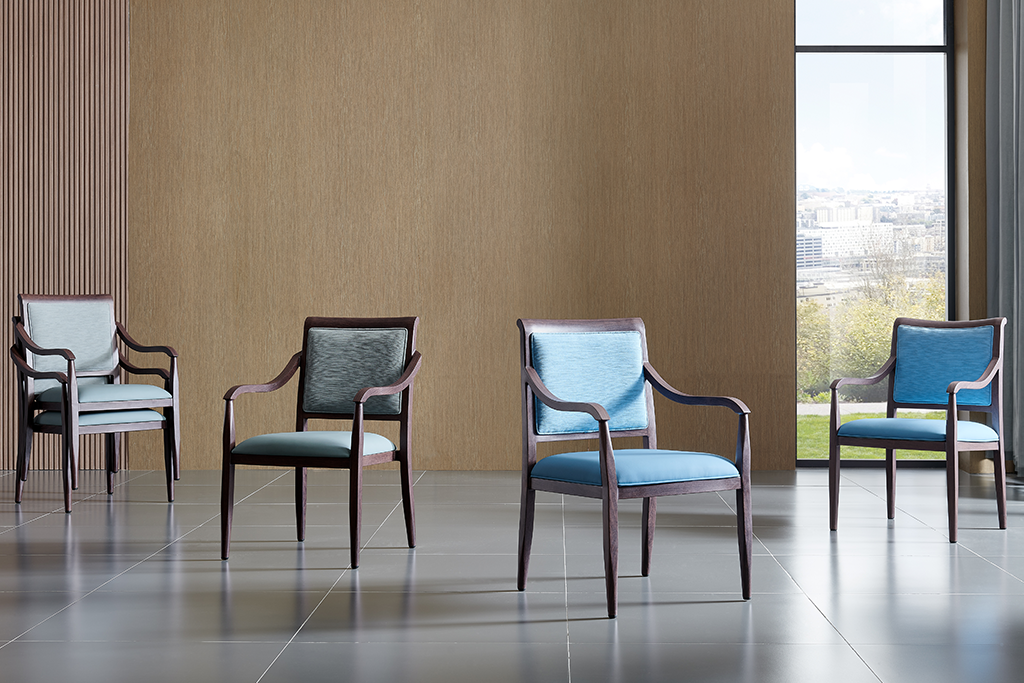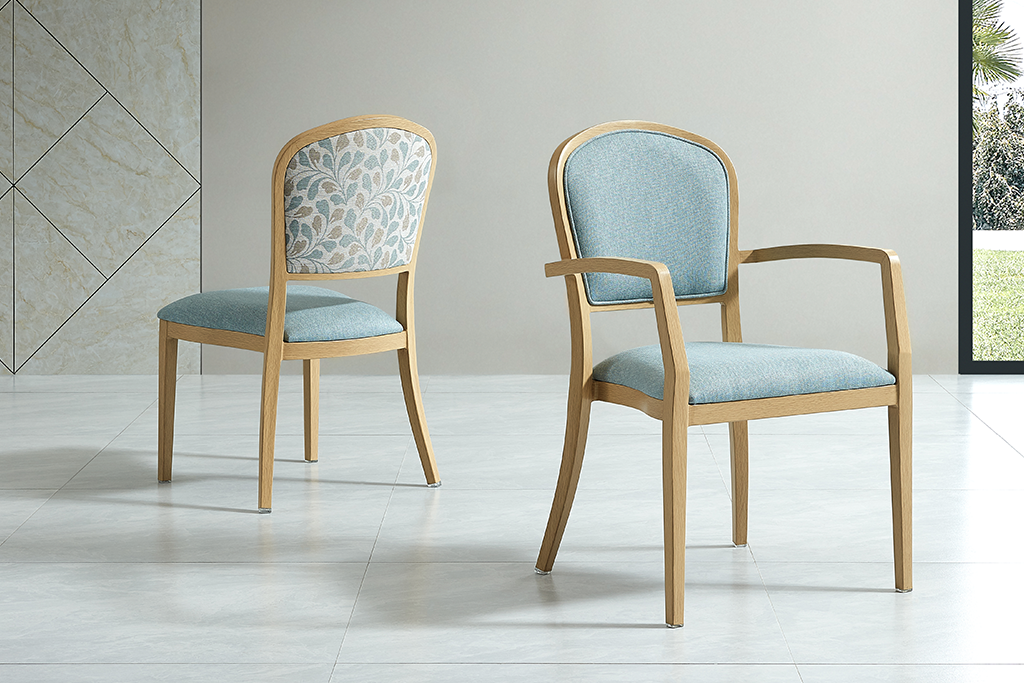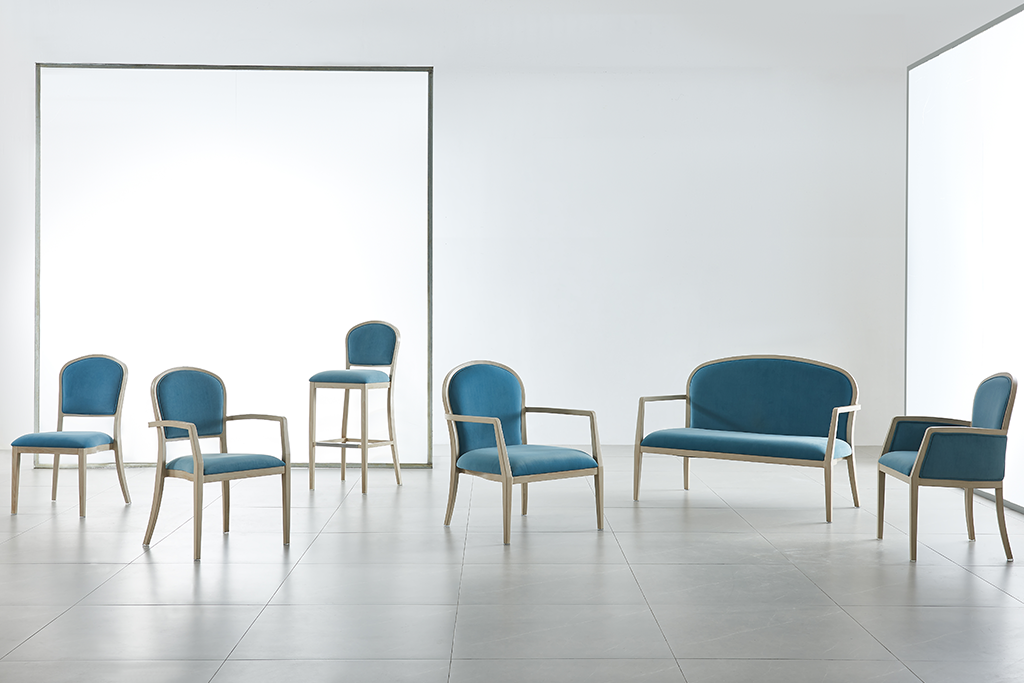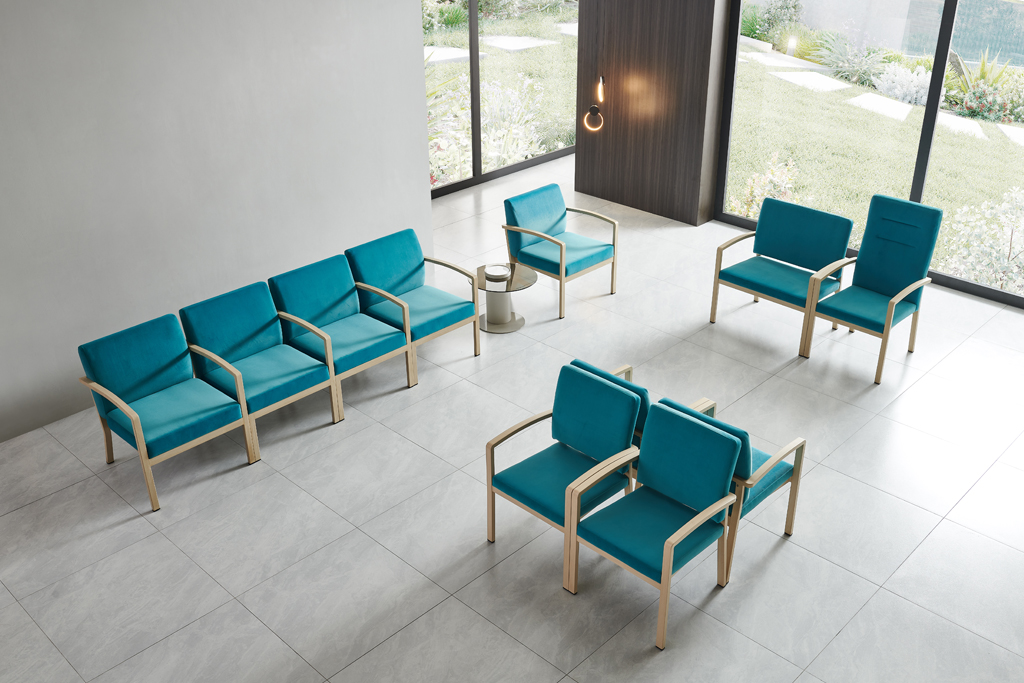Optimizing the living environment in nursing homes: creating high-end assisted living
Limitations and challenges of the current aging environment
The design of the current elderly care environment is still in its infancy, and many furniture and space designs do not fully take into account the actual needs of older persons, especially in terms of details. This has led to a lack of convenience in the use of many products, which cannot effectively meet the needs of older persons and their carers. For example, the design of some furniture has not taken into account the mobility of the elderly, which may lead to poor use and complicated operation, and may even affect the safety of the elderly.
As they age, the physical characteristics and conditions of the elderly will change. They will become shorter in height, their physical strength will diminish, and their eyesight and sense of taste will deteriorate to a certain extent. However, the furnishings of the original living space remain unchanged, and the changes in elderly facilities are not satisfactory, making it increasingly difficult to match people with their living environment.
Looking around the world, this situation is not an exception. According to the latest survey, the degree of global aging continues to deepen, but many senior living facilities and institutional environments have not been systematically adapted for aging. The design of age-friendly furniture and environments is becoming an urgent issue in the senior living industry, especially those that take into account the physiological characteristics of the elderly, such as ergonomic seating, furniture layouts that facilitate mobility, and materials that are easy to clean and maintain. By providing safe, comfortable and convenient furniture, senior living facilities can not only enhance the quality of life for seniors, but also improve overall operational efficiency. This trend creates significant market opportunities for senior living facility providers and designers to meet the growing needs of the aging population through innovative design.

While style is important in creating a space that allows seniors to live comfortably, furniture selection is fundamental
The older generation has experienced a lot of ups and downs, and they are used to working hard, dedicating and paying for their families and careers. When dealing with the stumbling blocks in life, they do not think that it is the existing retirement environment that needs to be changed, instead, they will look for problems in themselves, thinking that they are caused by the decline of their physical functions. Even if they are not feeling well, some elderly people will not take the initiative to talk about it, and they will endure everything in silence.
In a way, the elderly population is similar to children in that both need a certain level of care to ensure their health and safety. However, unlike ignorant children, the elderly have higher self-esteem and are more sensitive. Existing elderly furniture on the market is too cold and mechanical, with much less warmth, and the elderly are not willing to put themselves in such an environment. Therefore, how to eliminate the tension and seriousness brought by the existing equipment, and how to facilitate the daily life of the elderly while taking care of their self-esteem are the key points we need to consider.
As society develops and people interact closely with each other, the elderly need wheelchairs, canes and mobility scooters to get around, and the furniture seating facilities they use must stand up to wear and tear. Commercial grade furniture is best suited for nursing homes because of its safety and durability. However, there are some additional regulations that must be met in terms of material performance to handle harsh environments such as heat or humidity.

Prioritize durability first. Choose chairs made from strong, durable materials to ensure they can handle the challenges of a senior living environment. Metal materials, such as aluminum or stainless steel, are excellent assisted living chair choices because they are extremely strong and wear-resistant. Not only can these materials withstand the wear and tear of daily use, but they also provide essential support for seniors.
Next is safety. Senior living organizations must take extra care when choosing furniture, especially in light of the mobility and declining physical abilities of the elderly. Chairs should be designed to avoid sharp edges and corners to prevent the elderly from accidentally bumping into each other. At the same time, the stability of the chair is also crucial, strong frame and structure design can effectively avoid the chair in the use of the process of tipping over, to protect the safety of the elderly. For senior living facilities, choosing commercial grade furniture that is optimized for design not only meets the safety and comfort needs of seniors in their daily lives, but also greatly reduces the cost of maintaining and replacing furniture, and improves operational efficiency. By introducing high-quality furniture that is suitable for the senior living environment, senior living organizations can provide a safer and more comfortable living space for the elderly while enhancing their own competitiveness.
When choosing furniture for the elderly, ergonomic design is important and comfort and support should be prioritized. Sturdy and stable chairs with lumbar support, padded armrests and appropriate seat heights will enable older people to sit down and get up more easily. Avoid choosing chairs that are too soft or low, as these may make it more difficult for older adults to move independently. Regarding seat depth, the distance from the front edge to the back edge of the chair, if it is too deep, the sitter is forced to hunch over and the back of the legs feel discomfort from the pressure, which cuts off blood circulation and spasms tendons. If the depth is too shallow, discomfort may result from a reduced weight distribution area. A chair that provides good support not only improves sitting posture and body alignment in older adults, but also plays a key role in their mobility and balance.
As seniors sit in chairs for long periods of time, the height of the seat, the angle of the backrest, and the design of the armrests should be ergonomically designed to provide adequate support to help seniors maintain good sitting posture and reduce the stress on their bodies. The material of the chair should also be easy to clean and maintain. Anti-bacterial and stain-resistant surface treatment can effectively improve the hygienic performance of the chair and reduce the risk of bacterial growth, which is especially important for public places such as nursing homes.
In nursing homes, many older people need to use crutches or walkers to assist with walking. However, these aids are often inconvenient to use and store, especially in public areas and during breaks, and seniors often face the problem of having nowhere to put their crutches or needing to access them frequently. To solve this problem, the design of the chair can incorporate a hidden cane storage device.
This storage device is cleverly designed on the side of the armrests or the back of the chair, so that when the elderly sit down, they can easily place their crutches in the designated storage slots, which is not only easy to access, but also does not take up too much space or interfere with other people's activities. For example, the storage slot can be designed as a lightweight hook-like hanger hidden in the armrest. In this way, the crutches can be stored securely next to the seat without falling over or tripping others. This design takes into account the physical needs of the elderly as well as their mental health.
This chair design can also be combined with other practical features such as non-slip armrests, appropriate seat height and soft cushions to further enhance the experience of the elderly. With such detailed design, elderly care facilities can provide a more convenient, comfortable and safe living environment for the elderly, helping them to become more confident and independent in their daily lives. This not only improves their quality of life, but also effectively reduces the workload of caregivers.
At the same time, this hidden storage design also helps to keep the public space neat and tidy, avoiding the mess or safety hazards caused by crutches or walking aids placed randomly on the floor. For caregivers, this user-friendly design also reduces work pressure as seniors are able to manage their own assistive devices more independently and no longer need to rely on the help of others on a regular basis. This optimization not only improves the quality of life for the elderly, but also provides a more organized and efficient environment for the elderly care facility.

Rationalize space and furniture layout to reduce barriers and improve accessibility
In nursing homes and care centers, seniors often spend a lot of time in common areas, so proper planning of these open spaces is especially important. Through scientific furniture layout, not only can social interaction be facilitated, but it can also ensure that elderly people with limited mobility can move freely and safely in the space. Rationally planned furniture placement should minimize the obstacles encountered by the elderly when walking, avoiding excessive accumulation of furniture or too narrow a passageway, and ensuring that assistive devices such as wheelchairs and walking aids can pass through smoothly.
Seating should be arranged in groups to promote communication among older persons and to provide the necessary support for those with mobility problems. The chairs should be placed against the wall or close to the corridor. Avoid placing the chairs in the middle of the passageway so as not to impede access. At the same time, keeping the passageway near the entrances and exits unobstructed makes it easy for the elderly to choose the right seat according to their physical condition, and avoids the inconvenience caused by the chair being too far away from the entrances and exits.
To this end, Yumeya chairs are equipped with smooth casters and easy-to-grip armrests for added convenience in daily use.
l Smooth caster design
The addition of casters greatly improves the mobility of the chair. For caregivers, the smooth casters make it easy to move the chair around a room or common area without the need for vigorous lifting. The casters are made of wear-resistant material that ensures smooth gliding on different flooring materials such as wood, tile or carpet, reducing wear and tear on the floor and making it easy to push and pull the chair to quickly adjust the layout of a room or to help mobility-impaired seniors move around safely.
l Easy-grip armrests
For the elderly, the armrests of a chair are not only a comfortable point of support, but also an important support when standing up and sitting down, helping to maintain balance and reduce physical exertion when getting up. The materials used for armrests are usually carefully selected to ensure that they are both non-slip and comfortable to the touch to avoid discomfort after prolonged contact.
l Overall convenience and practicality
This combination of smooth casters and easy to grip armrests not only facilitates the daily life of the elderly, but also greatly reduces the stress of the caregiver's work, thus increasing the efficiency of the caregiving process. When cleaning or rearranging a room, this design greatly enhances the ease of operation.

All
For over 25 years, Yumeya Furniture has been a global leader in customized furniture that excels in design, functionality and durability. We offer a 10-year warranty on our sustainable seating; a testament to the durability and craftsmanship of our products. Additionally, our catalog includes a wide range of color/design options so you can pick the right seating for your facility.
In addition, ergonomic designs ensure comfort during extended use, while a variety of styles and finishes are available to meet different décor needs.Yumeya has a dedicated customer service team to provide personalized assistance and build a successful partnership with our customers. Explore our extensive collection to transform your space with quality, function and style. Contact us today to shop for chairs for your senior living center!











































































































